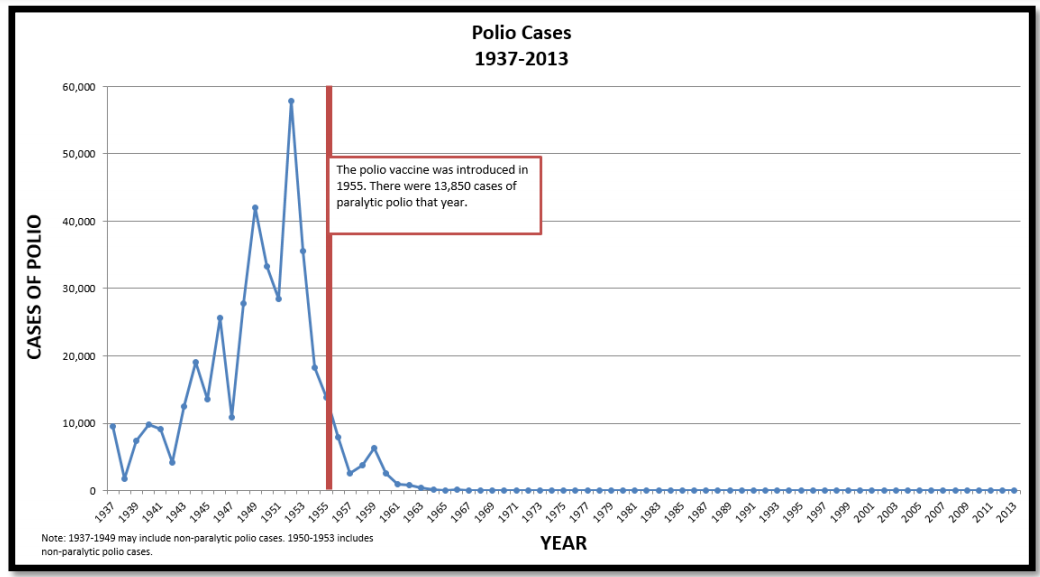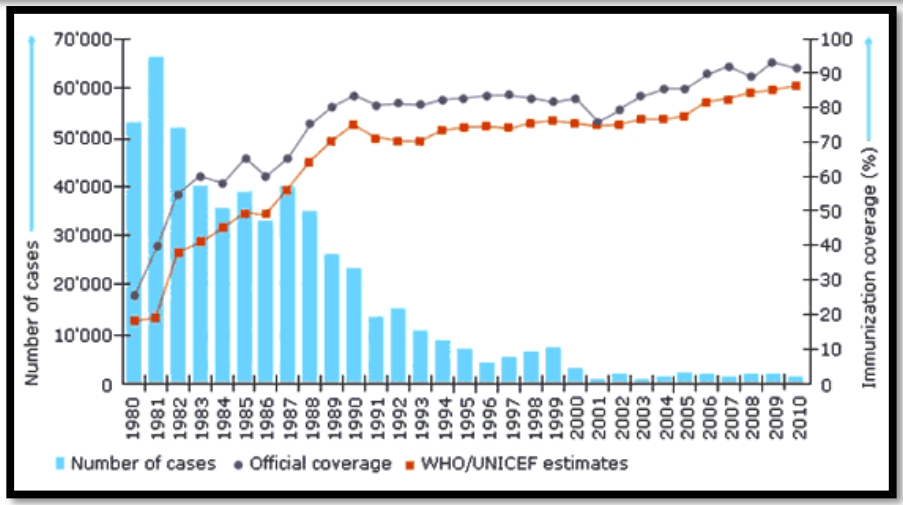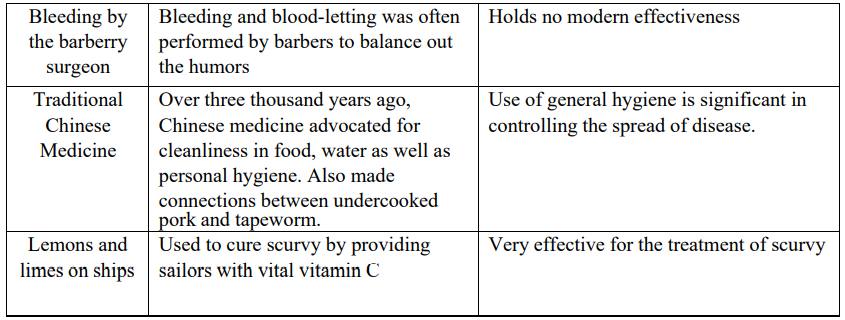On your way to Biology mastery? Enrol in our 99.5 studyscore masterclass. Click here!
Content Descriptor: Investigate procedures that can be employed to prevent the spread of disease, including but not limited to:
Hygiene practices: (7.4.1)
- Hand washing and showering – prevent the build-up of pathogens on the skin which maybreach the first line of defence through abrasions.
- Safe disposal of waste – prevents diseases spread indirectly through faecal matter such ascholera
- Covering mouth and nose when sneezing/face masks – prevents the spread of diseasesdirectly by denying a method to move from one host to another
- Safe cooking practices – Effective cooking eliminates harmful pathogens such as tapewormsand bacteria in food, can also denature prions.
- Useful inpreventing the local spread of disease
Quarantine: (7.4.2)
- A state, period, or place of isolation in which people or animals that have arrived fromelsewhere or been exposed to infectious or contagious disease are
- Can be a large strain on resources and can make it difficult to provide care to quarantined
- Usefulin preventing international and regional spread of disease
Vaccination, including active and passive immunity: (7.4.3)
Vaccination:
- The process of exposing an individual to a weakened or inactive version of a pathogen, whichinitiates and immune response.
- Aform of artificially acquired active
- Injectionof antibodies:
- A form of passive immunity can be obtained through the transfusion of antibodies from oneperson to
- This is restricted however, as the levels of antibodies in the donor needs to be high enough tofight off infection and also must be an appropriate blood
Vaccine types:
- Wholeagent – Contains whole micro-organisms:
- Inactivated(killed by chemical treatment). No risk of contraction
- Attenuated(weakened by mutation). Low risk of contractions
- Subunit vaccine – Contains some part or product of the micro-organism to produce animmune
- Recombinant vaccine – Genetic engineering techniques used to cause other microbessuch as yeast to produce the desired antigen.
- Toxoid– Bacterial toxins that have been inactivated
- Conjugated – Polysaccharide capsules are combined with proteins such as toxoidsfrom other pathogens
- Acellular – Fragmentation of a conventional whole-agent vaccine and collecting thedesired fragments of antigens.
Polio:
- Viruswhich attacks nerve cells and central nervous system
- Jonas Salk created a vaccine which was injected and had a 60-70% prevention rate. However,after 200 people contacted the disease from the vaccine, causing 11 deaths, testing was
- Albert Sabin produced an ingestible vaccine through studying a rare form of the polio virus in
Public health campaigns: (7.4.4)
- Notifiable diseases must be reported to authorities to track and control their movement viaother mechanisms
- Quit smoking campaign and slip, slop, slap aim to raise public awareness about the dangersand support groups which can help.
Use of Pesticides: (7.4.5)
- Chemicalsthat destroy organisms considered to be
- Anexample of this is DDT pesticide which is used to destroy body lice to control typhoid
- Useof pesticides can be used to control insect vectors, but can lead to resistance of organisms to pesticides limiting their effectiveness
Genetic engineering: (7.4.6)
- Alterationof genome by adding or removing genes
- Producingdisease resistant strains of plants and animals:
- Cottonresistant to pests
- Investigation into changing the DNA of banana trees to make protect them from theinsect vector of the BBTV
Content Descriptor: Investigate and assess the effectiveness of pharmaceuticals as treatment strategies for the control of infectious disease for example:
Antivirals: (7.4.7)
- Drugswhich can treat people already infected with a virus
- Preventof limit infection when given before or after exposure
- Onlyeffective for the duration of the time frame in which they are used
- Actby arresting the replication of viral cycles at different stages
Antibiotics: (7.4.8)
Method of antibiotics:
- Preventthe cell wall from forming when bacteria divide, for example penicillin
- Destroythe cell membrane for example miconazole
- Interferewith protein synthesis such as erythromycin
- Inhibit enzymes such as sulphanilamide
- Do not work on viruses nor prions
Spectrum:
- When antibiotics are prescribed, they are usually done so with reference to the type of
- Ifthe bacterial species is unknown, broad spectrum antibiotics will be used
- If the species is known, the bacteria will be specific to the type of bacteria, usually linked tothe gram
Resistance:
- Excessive use of antibiotics has led to many bacteria becoming resistant, which hassignificant impacts for hospitals.
- This can occur through natural selection, but also may be a product of unfinished courses of
- Bacteria can achieve resistance through the swapping of plasmids, or through transductionwith
Content Descriptor: Investigate and evaluate environmental management and quarantine methods used to control an epidemic or pandemic: (7.4.9)
Malaria:
Malaria is a disease caused by the Plasmodium protozoan and spread by mosquitos. Symptoms include fever, tiredness, vomiting, headaches and death.
Environmental management – Intervention and targeting of one of the breeding areas or mosquitos. The breeding areas such as ponds or water basins can be drained through irrigation and water management. These areas can also be managed through treatment with oils, toxins or larvicides. These have been shown to be effective in decreasing the mosquito population and thus reducing the effectiveness of the malaria vector.
Alternative intervention methods such as introducing fish to eat the mosquito larvae have had limited effectiveness.
Quarantine – Quarantine for malaria patients is not required nor effective in controlling the malaria pandemic since it is spread via the insect vector.
Content Descriptor: Interpret data relating to the incidence and prevalence of
- infectious disease in populations, for example:
Mobility of individuals and the portion that are immune or immunised: (7.4.10)
Polio



Malaria or Dengue Fever in South East Asia: (7.4.11)
Malaria
Primary countries affected in South East Asia:
- Bangladesh
- Bhutan
- India
- Indonesia
- Maldives
- Myanmar
- Nepal
- SriLanka
- Thailand
Movement into cities and urbanisation has increased the access to medicine, which has tended to increase the incidence of drug resistant malaria, in some regions resistants rates of parasites reaches 80%.
Populations at greatest risk are rubber tappers in Thailand, with an incidence of 46.29%, with other high-risk groups including infants and pregnant women. Overall incidence is 2.5-2.8 million cases.
Worldwide, malaria kills approximately 435,000 people every year, with a majority under the age of five.
Content Descriptor: Evaluate historical, culturally diverse and current strategies to predict and control the spread of disease: (7.4.12)
Malaria:


Modern methods to control disease include the aforementioned (7.4.2-7.4.7). Modern strategies also include computer simulations of the spread of disease such as Ebola and HIV to predict and evaluate the most effective methods to target control.
Content Descriptor: Investigate the contemporary applications of Aboriginal protocols in the development of particular medicines and biological materials in Australia and how recognition and protection of Indigenous cultural and intellectual property is important, for example:
Bush medicine: (7.4.13)
Definition:
Practices and belief systems used in the maintenance of good health
Tea tree oil and Emu bush:
- Usedby indigenous people as an antiseptic
- Usedby pharmaceutical companies to make widespread antiseptic
Eucalyptus oil:
- Usedby indigenous people as an antiseptic
- Usedby pharmaceutical companies to make mouthwash and throat lozenges
Smoke bush in Western Australia: (7.4.14)
Use:
- Used for thousands of years for natural healing properties, inhaled to help cure colds and avariety of ailments
Controversy:
- Investigatedin 1980’s for use in treatment of HIV
- WA government signed patent granting rights of the product to the USA withoutacknowledging or compensating indigenous people, in which the government was paid 1.5 million, while royalties may exceed 100 million /
Recognition:
Recognition of Indigenous people is significant for two primary reasons. First, it is vital to recognise the validity of Indigenous cultural practices and the consequent contribution of such to the establishment of modern medicine. Secondly, financial compensation is necessary to ensure the solidification of the former recognition but also to prevent the exploitation of indigenous culture by large corporations.
Inquiry Question Review: How can the spread of infectious disease be controlled? (7.4.15)
You should be able to:
- Understandthe control methods for a variety of infectious disease
- Comparethese techniques in effectiveness to past control methods
- Describethe use of antivirals and antibiotics
- Describethe Indigenous uses of medicine and why recognition of such is significant
